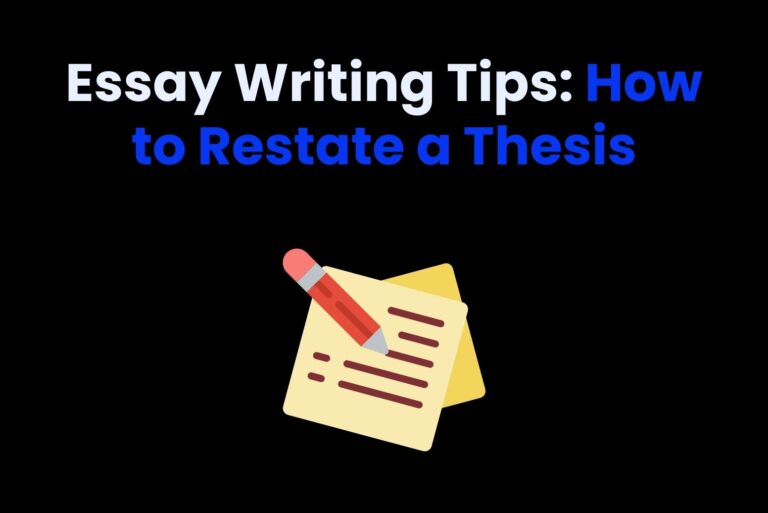How to Write an Abstract: A Step-by-Step Guide for Success
So, you just graduated and you need to know how to write an abstract. But you don’t know how!
That’s actually a bit of a problem because if you nail it, your work will get noticed and get the credit it deserves. But, let’s get real here, writing a solid abstract it’s a tough task most times. And this is especially true if you’re just starting out doing academic writing.
But don’t stress! We are here to help you out!
In this guide we are going to show you how to write an abstract and avoid common mistakes. Don’t worry, it’s okay if you’re a research pro or just starting out, this article we’ll be useful.
Ready to jump in? Read on!
What is an abstract and why is it important?
Actually, an abstract is a key point of your thesis or research paper. This is because it offers a concise summary of your work that serves as the first point of engagement for readers.
For instance, positioned at the very start of your document, it’s often the initial detailed explanation that external reviewers or audiences encounter. Think of it as your opportunity to outline the key aspects of your research and set clear expectations about its scope and significance. If you’re wondering how to craft one effectively, we’re here to guide you through the process, too.
Also, on the contrary of an introduction or preface, which provides background or context, an abstract operates as a standalone piece. For that, this is designed to summarize your research and can be included in announcements for presentations.
Readers who discover your abstract in a database or receive updates about your research may never access the full paper or attend your presentation. This makes the abstract a critical tool for communicating the core of your work to a broader audience.
Its role extends beyond merely introducing the thesis—it’s crafted to serve as a substitute for the full text when time or space is limited.
How to write an abstract?
Writing an abstract is super important to explain your research clearly. And in reality, it doesn’t matter if it’s for your thesis or an important research paper. With these steps you’ll make the ultimate abstract.
So, let’s get started and make it happen!
1. Understand the purpose of an abstract
The abstract is basically a quick snapshot of your research. It’s there to show readers what your work is all about. First, with, you want to share your findings and then make a conclusion with that info.
Also, don’t forget to answer the big question: Why does this matter? Keep in mind, the abstract usually stands on its own and it makes people want to read or not your text.
2. Follow the word limit
Abstracts typically have specific word count requirements depending on the level of work:
- Master’s thesis: Up to 150 words
- Doctoral dissertation: Up to 350 words
Keep your abstract concise, ideally fitting onto one double-spaced page (around 280 words).
3. Outline the structure
Divide your abstract into sections that align with your thesis or dissertation:
- Introduction/objective: Briefly state the purpose of your research.
- Methods: Summarize the approach or methodology used.
- Results: Highlight your key findings—this is the heart of the abstract.
- Conclusion: Discuss the implications or significance of your research.
Each section should be addressed in 1-2 sentences for balance and coherence.
4. Focus on the research questions
Include one to three primary research questions that drive your study. If you have more, simplify by merging or prioritizing them. That’s because the abstract should clearly reflect the scope and focus of your work.
5. Emphasize results over methods
Avoid dedicating too much space to methodology. While it’s important to mention how the research was conducted, the main focus should be on what you discovered and its relevance. Approximately half of the abstract should summarize and interpret your results.
6. Use clear and concise language
Try to write in present tense or past perfect tense. That will depend if you’re describing findings or the research process. Also, try to avoid technical jargon because it makes the abstract way too stuffy.
7. Verify placement and formatting
The abstract is typically placed after the foreword and before the table of contents. Ensure it follows the formatting guidelines of your institution or publisher.
8. Write after completing the main paper
The abstract should be the final section you write. Having a complete understanding of your research ensures a more accurate and compelling summary.
9. Review and revise
Once written, revisit your abstract with a critical eye. To do this, just check for grammatical errors, redundancy, and whether it effectively communicates the core elements of your research. You can also seek feedback from your advisor or peers.
Tips for clarity when writing an abstract
Writing a clear, straight-to-the-point abstract is super important for getting your research across. After all, you want your readers to get the main idea with 0 confusion.
So, here are a few simple tips to help you write one that’s easy to understand and really gets to the point.
1. Prioritize simplicity and brevity
Avoid overly complex language or technical jargon. In contrast, just use simpler terms that are easy to understand. That’s because the goal is to communicate your ideas clearly, not to stuff things unnecessarily.
2. Focus on key points
Then, you can just pick the most important elements of your research: objectives, methods, results, and conclusions.
3. Structure your abstract effectively
Organize your abstract logically to guide readers through your research:
- To begin with, go with the purpose or goal of your study.
- After that, just outline the methods you used.
- Then, highlight your main findings.
- Finally, conclude with the significance or implications of your results.
A clear structure helps readers follow your narrative without confusion.
4. Avoid ambiguity
Be precise in your language to prevent misinterpretation. Replace vague terms with specific details that clearly explain your research. For example, instead of saying “many factors were analyzed”, specify what those factors are.
5. Stick to the word limit
Adhering to the required word count ensures your abstract is focused and concise. Yet, going over the limit can dilute your message, while being too brief may leave out critical details. Aim to balance completeness with brevity.
6. Write after completing your research
Writing your abstract after finishing your full paper allows you to summarize with clarity (and confidence!). This ensures that your abstract accurately reflects the content and findings of your research.
How to write an abstract without making common mistakes
Creating the perfect abstract takes some work, but it’s totally something you can do. First off, you need to be clear, straight to the point, and make sure to proofread carefully.
One of the most common mistakes in abstracts is using vague or unclear words that leave people scratching their heads.
That’s a big no. Particularly in the scientific world.
So, instead of saying something like “various methods were used” get specific and tell them which methods were actually employed.
Next up, proofreading is super important to make sure your abstract sounds sharp and on point. Certainly, you can give it a go yourself, but using AI tools can really step up your game. These tools will catch grammar slip-ups, awkward phrasing, and things that don’t quite flow right. Plus, reading your abstract out loud and getting feedback from others can really help tighten things up.
By clearing up any confusion and using AI tools to polish your writing, your abstract will be clear, direct, and pack a punch. In the end, this will make your research stand out and get the attention it deserves.
Enhance your abstract writing with Arvin AI
In conclusion, writing a clear and precise abstract requires careful attention to detail, effective proofreading, and the elimination of any ambiguity. By focusing on specific, well-chosen details and ensuring your language is clear, you can create an abstract that accurately reflects your research.
Leveraging AI tools, such as Arvin AI, can make this process even more efficient. Arvin AI is an excellent resource for creating text, proofreading, and generating ideas that elevate the quality of your work. Plus, if you need help translating your abstract or ensuring it meets the highest standards, Arvin AI, powered by GPT-4, is here to assist.
With its powerful features, Arvin AI can streamline your writing process and make your academic journey much easier.
FAQs
How to write an abstract that stands out?
Want to know how to write an abstract that grabs attention? First, make sure you sum up your research in a way that really shows why it matters. Keep it simple and straight to the point, using clear and specific language. Don’t just list your ideas—make sure they flow smoothly from one to the next.
Should I write the abstract first or last?
Well, it’s usually best to write your abstract last, after completing the research paper. This way, it reflects the final content accurately. Although, some writers find drafting an abstract early helps to guide the structure of their paper.
How do I know if my abstract is effective?
An effective abstract will provide a clear snapshot of your research. It should allow the reader to quickly understand the purpose, methods, results, and conclusions without needing to read the full paper.





